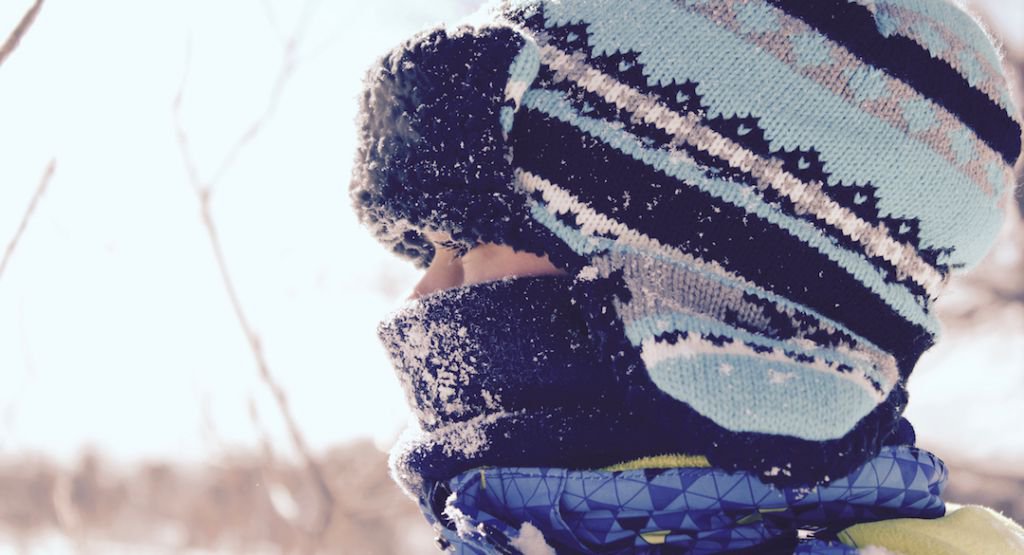
Winter is in full swing, bringing along frigid temperatures and frosty wind chills. While frostbite more commonly occurs in people who participate in cold weather sports like skiing or snowshoeing, it can can be a serious concern for many, especially for the homeless or those who work for extended time in the outdoors.
What is frostbite?
Frostbite occurs when skin is exposed to extremely cold temperatures, causing tissue to freeze. Depending on the conditions and length of exposure, frostbite can set in quickly or take awhile to develop. It isn’t just spending time outdoors in the cold that can cause this, though — touching very cold surfaces or liquids can also lead to frostbite.
Frostbite most commonly occurs in the extremities — fingers, toes, face and head, specifically the nose, chin, and ears. Because skin numbness is one of the first symptoms to appear, it is easy to be unaware that frostbite is setting in.
What are the different severity levels of frostbite?
- Frostnip. This is a mild case of frostbite where the skin becomes numb and either red or pale. When the skin starts to rewarm, you may feel a “pins and needles” sensation or even some pain. There is typically no permanent tissue damage with frostnip, although further exposure to extreme conditions can cause it to get worse.
- Superficial frostbite. At this degree of severity, symptoms including skin paleness , redness, and swelling kick in. The skin can appear pale and waxy, and it often feels quite numb. If exposure persists, you may begin to develop large blisters. These can persist and eventually burst. Painful discolored lesions, called “chilblains,” can appear on the hands. Permanent damage is possible but uncommon. With prompt medical attention, you can reduce the chance of long-term injury.
- Severe frostbite. When exposed to the elements for extended periods of time, frostbite can get significantly more serious. In a worst case scenario, blisters may start to bleed, motor function can be impaired, and pain may be felt in the area. Deeper layers of tissue are affected, potentially causing permanent damage. With rewarming, more blistering can occur and tissue can turn black over a period of time. In rare, very extreme cases, amputation of the exposed area may be necessary.
Who is at higher risk for frostbite?
- Elderly, infants, and young children are at higher risk since they may not be able to generate ample body heat.
- Conditions that reduce blood flow, such as dehydration, exhaustion, diabetes, and smoking, increase risk.
- Higher altitude, due to decreased oxygen supply, can cause frostbite to set in faster.
- Mental illnesses or the influence of drugs or alcohol make you more prone to frostbite since impaired judgment may lead someone to a more precarious situation.
- Previous frostbite injuries make you more susceptible to frostbite in the future.
When should I seek medical attention?
No matter how many precautions you take, though, frostbite can still set in. Here’s how you know it’s time to call for medical help:
- Skin color changes such as redness, paleness, or blue-appearing skin
- Prolonged loss of sensation in the affected area
- Appearance of blisters in the affected area
- Loss of control of muscles
- Pain or swelling
For symptoms of hypothermia (decreased whole body temperature), such as excessive shivering, disorientation, or slurring of speech, seek immediate medical attention.
What should I do if I have frostbite symptoms?
- DO avoid prolonged exposure to the cold, especially if you begin to experience symptoms of frostbite.
- DO remove wet clothing.
- DO seek medical attention immediately if your symptoms persist despite removing yourself from the cold.
- DO avoid prolonged walking if you experience frostbite symptoms of your feet, since this can cause further damage.
- DO NOT try to rewarm an exposed area if you are still at immediate risk for refreezing — it will make the symptoms worse.
- DO NOT try to rewarm any numb areas of the body by placing them near a stove or fire. The inability to feel the heat may put you at risk for burns
- DO NOT rub an area that is affected by frostbite to avoid further tissue damage.
How can I avoid frostbite?
- Dress appropriately for cold weather conditions, paying special attention to extremities, your head, and any possible wind-exposed areas.
- Wear wind resistant clothing and moisture wicking fabrics, as well as long underwear.
- Stay well hydrated and eat regularly.
- Keep your body moving. Exercise helps to keep blood flowing.
- Avoid drinking alcohol when exposed to cold conditions. It makes it harder for your body to stay warm and can impede your judgment.
- Plan ahead if there’s a chance of getting stranded in the cold. Bring extra layers and supplies, and pay attention to weather predictions and storm warnings
Still have questions? Reach out to our team anytime via the One Medical mobile app or give us a call.
The One Medical blog is published by One Medical, a national, modern primary care practice pairing 24/7 virtual care services with inviting and convenient in-person care at over 100 locations across the U.S. One Medical is on a mission to transform health care for all through a human-centered, technology-powered approach to caring for people at every stage of life.
Any general advice posted on our blog, website, or app is for informational purposes only and is not intended to replace or substitute for any medical or other advice. 1Life Healthcare, Inc. and the One Medical entities make no representations or warranties and expressly disclaim any and all liability concerning any treatment, action by, or effect on any person following the general information offered or provided within or through the blog, website, or app. If you have specific concerns or a situation arises in which you require medical advice, you should consult with an appropriately trained and qualified medical services provider.